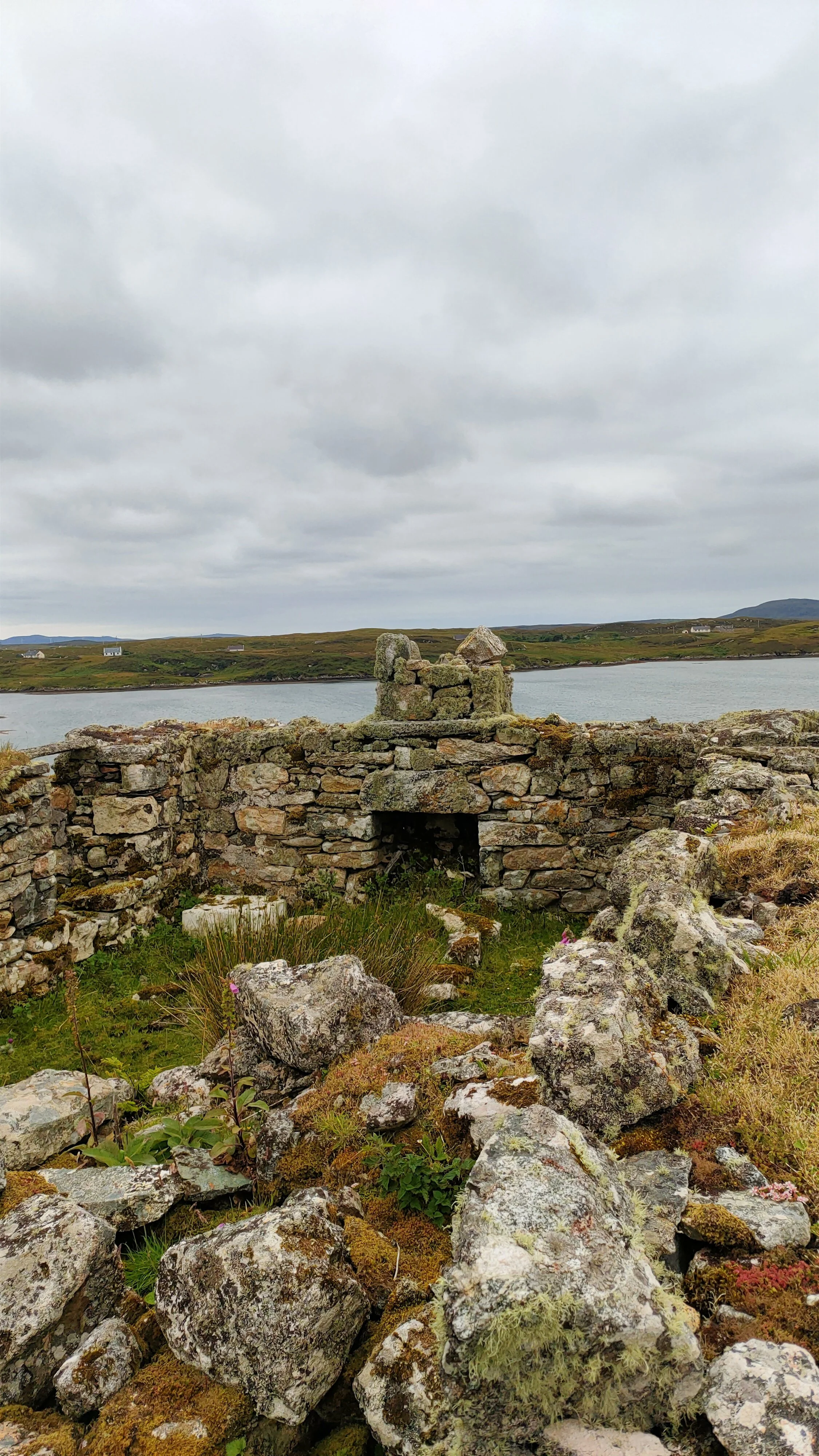The fascinating history of life on Ronay Island
Ronay Island’s ecology has seen human and animal activities for centuries. Although the last significant human settlement was abandoned around 200 years ago, it is clear to see the way the land has been adapted to fit the purposes of the times. We can still find ruins of houses, dams, and even a school, and over the years there will have been grazing herds of cattle and sheep, cultivation of crops, peat cutting, muirburn and harvesting of seaweed on the shores.
Ronay Island is named for its rugged landscape and steeply sided rock outcrops, which stand out against the low-lying surrounding areas. Ronay, or hraun-ey in Old Norse, fittingly translates to “rough island.”
Early ownership
Ronay Island has changed hands many times over the centuries, but between 1346 to 1346 and 1855 to 1966, it was owned by various branches of the Clan MacDonald. In between these two periods, it was owned by Sir John Powlett Orde (later Campbell-Orde).
For much of the 18th and 19th centuries, Ronay was used as part of wider landholdings such as Baleshare tack. Although it seems unusual for separate parcels of land on the extreme west and east sides of North Uist to be held as one tack, the practice was not uncommon at the time and livestock will have grazed across both areas.
During this time it is also suggested that Ronay was being visited seasonally for harvesting and processing seaweed, and soon after, Ronay was settled as a kelping community.
In 1855 the island was sold to Sir John Powlett Orde (later Campbell-Orde). Ronay then became part of the tack of Kallin Farm on Grimsay, and was rented by a series of tenants over the next three decades including Alexander MacDonald of Balranald and James Shaw of Sponish.
Captain Allan MacDonald of Waternish on Skye eventually bought Ronay from the Campbell-Orde family in 1886 with a plan to develop it into a hunting estate, but it was never completed.
Ronay Island’s seaweed boom
In the early 19th century, the Scottish seaweed industry was at its peak, and life on Ronay Island was focused on collecting and processing seaweed rather than traditional farming. Harvesting the seaweed was hard work, done using a small sickle-like tool called a corran. Heather rope was used to tie the harvested seaweed together to create a raft to bring it to shore.
Between 1805 and 1810, 26 crofts were established on the island. By 1814, rental records show 27 families and 139 residents. The population continued to grow, reaching around 180 by 1823, and a school was established in 1824.
Processed kelp was sold for money or exchanged for essentials, often at Poll an t-Suicair, or “Sugar Bay,” on the southwest shore. Kelp was an important source of sodium, potassium, and iodine, used in the processes of glass and soap manufacture at the time.
The price of Scottish kelp rose from around £3 a ton in 1750 to a high of over £20 in 1810, but in the decade following the Battle of Waterloo, with the lifting of punitive duties on Continental imports, prices collapsed, causing catastrophic loss to Ronay’s community. By 1827 even the highest grade of kelp had fallen back to £3 a ton.
Following the decline of the kelp industry, the island was largely abandoned, and by the 1841 census, only one family remained. Meanwhile during this period, up to 1,300 people were forcibly removed from their homes throughout the area of North Uist, and it is very likely that some of the community on Ronay were included in this figure. Ronay Island was subsequently run as a sheep farm.
Historic ruins show plans for a hunting lodge
In 1886, Captain Allan MacDonald of Waternish on Skye purchased Ronay. He was a keen huntsman and is mentioned in books about Highland Terriers as a breeder of a particular type of Skye Terrier for hunting otters.
Captain MacDonald planned to develop a hunting estate at Bàgh na Caiplich, on the east coast of the island. Plans included a hunting lodge, walled garden, jetty, and a dam with a boating wharf over the outflow between Loch na Leig and the bay.
However, while the engineering works appear to have been largely completed, the house and garden never proceeded beyond the foundation stage. A temporary building, probably a pre-fabricated corrugated iron structure, was erected on part of the foundations. Other features, such as a stone quarry and lime clamps, were also recorded.
Following his passing in 1906, the island remained in Captain MacDonald's family for many decades. You can still find the ruins of the foundations he built on the island, and with some imagination it is possible to imagine the extensive plans he had for the estate.
How the history of the island inspires us today
Despite nearly 200 years without a permanent population, Ronay’s landscape still reflects centuries of human and animal activity, from grazing and peat cutting to kelp harvesting and hunting. Its rugged terrain, historical ruins, and wildlife, including otters and red deer, make Ronay a unique island rich in Hebridean history.
Working with local business owners, we’re exploring the development of seaweed-based products that honour the history and traditions of Ronay Island, alongside our natural regeneration plans.
You can read more about the island’s long and fascinating history in this 2018 field guide, written by David Newman.



